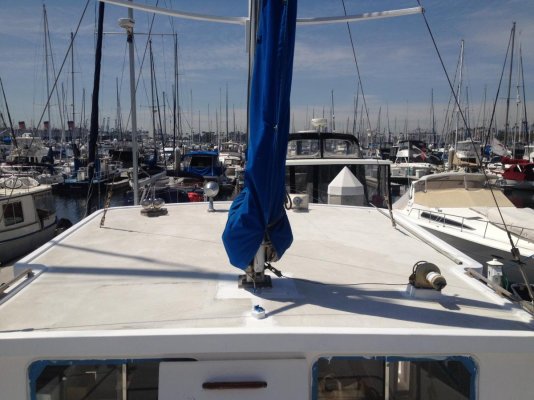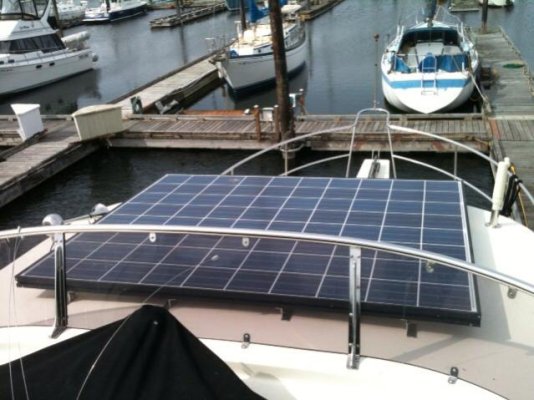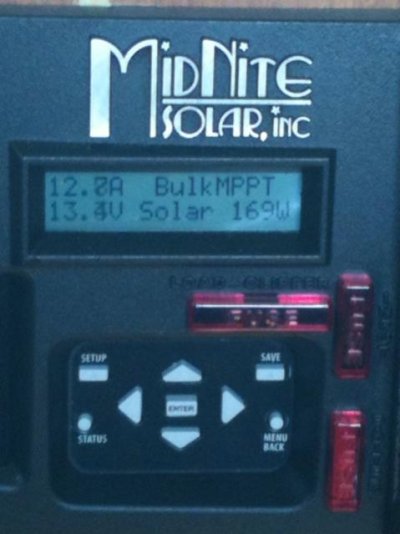By the way, what's an MPPT controller - what do the letters stand for, and how does it differ from the Sunguard controllers I have which are called PWM = pulse width modulated controllers..?
MPPT stands for Maximum Power Point Tracking. Panels are what's know in the electrical engineering world as a constant current device. That means that over a range of loads, they produce a constant current, and only the voltage drops/rises.
PWM does indeed mean Pulse Width Modulation.
Here's how each works:
PWM simply connects and disconnects (switches) the panels and the battery in such a way as to maintain a desired voltage. The amount of time that the panels are connected vs disconnected is considered the Pulse Width. By varying (Modulating) the pulse width, the controller regulates the voltage and hence the charging of the batteries. Make sense?
Getting back to panels and their constant current nature, a PWM controller basically operates the panels at the battery voltage. So if the panels generate 10A of current, and your battery voltage while charging is 14V, you will get 140W out of the panels. The issue is that panels are typically rated at higher voltages. In fact, every panel has a maximum power rating which is base on the highest operating voltage just before the current starts to collapse. This is referred to as the Maximum Power Point, and is achieved at the maximum power point voltage, know and Vmp (Voltage, maximum power). If you look at the spec sheets for any panel you will find all these numbers, and they are all based an a set of standard test conditions. Getting back to a PWM charger, it operates the panel at 14V where the panels Vmp is more likely around 20V. So a panel that is ideally able to produce 200W (20V x 10A) is only being harvested at 140W. The difference is the opportunity that an MPPT controller captures.
MPPT works a little differently than PWM, and is instead based on a variable DC to DC converter. It's called an MPPT controller because it operates the input to the DC-DC converter at the panels maximum power point, namely 20V in out example. So the input power to the DC-DC converter is the full 200W that the panel has to give. It then operates the converter output at the desired battery voltage, say 14V while charging. Well designed DC-DC converters are pretty efficient - around 90% or more, so 90% of the 200W input power is available at the output yielding 180W to charge the batteries. Compare that you the 140W we got from an PWM controller. That's a 28% increase in charging power. Pretty nice, right?
That's the basics, but there are a lot more smarts in an MPPT controller. It needs to "search" for the max power point on whatever combinations of panels you have attached, and it needs to find that max power point as the sun exposure varies over the course of the day, and as weather changes. This is where the "Tracking" part of MPPT comes from.
Hope that helps.
Oh, and I'd like to recommend the Alternative Energy Store (
AltE: Solar Panels & Solar Energy Gear | Call 877-878-4060) as a good source for this sort of gear, including inverters and batteries. I have no financial affiliation, though they are friends of mine.



